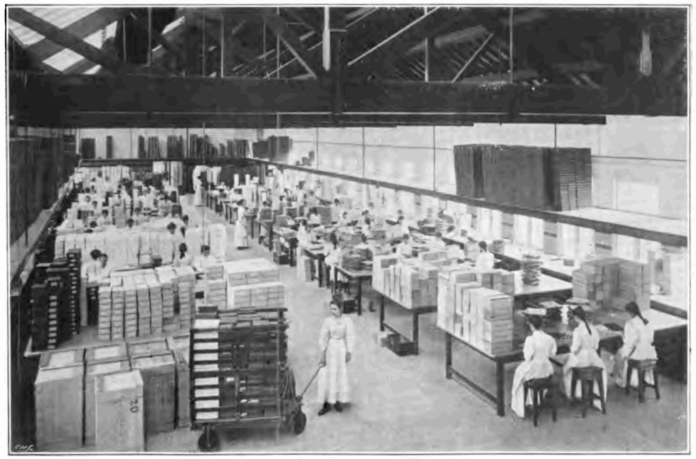
If there were a Mount Rushmore for Chocolatiers, you can be sure John Cadbury’s face would be chiseled in granite. Few others in the chocolate industry have the name recognition or can boast a continuous presence for almost 200 years. It was a Cadbury who developed milk chocolate, to the delight of chocoholics all around the world. But what may have been lost in history is the enormous impact the Cadbury’s had on modernizing the industrial workplace. Not from a technological perspective but rather by introducing concepts to create more employee-friendly working conditions.
Founding Father John Cadbury
John Cadbury was born to a Quaker family in Birmingham, England in 1802. Because many areas of higher learning were considered off-limits for Quakers, his father sent him to learn the tea business. He studied under a Quaker tea retailer named John Cudworth, who taught young Cadbury all there is to know about the tea retail business. To pass the time, Cadbury would read encyclopedias, which opened his eyes to the workings of the cocoa trade and the possibilities that the product represented. Thus, when Cadbury went on to start his own tea and coffee shop in Birmingham in 1824, he included cocoa drinking products.
Soon, public interest in cocoa products grew to the point where in 1831, John Cadbury opened up a cocoa factory in Birmingham, which ultimately became a laboratory of sorts where he would experiment with variations of cocoa. In time, the factory would produce sixteen drinking chocolate products and eleven cocoas.
A Breakthrough in the Family Chocolate Tradition
In 1861, John Cadbury’s sons Richard and George took over the family business. After struggling through a downturn that forced them to cut the number of employees in half, the brothers decided to abandon the tea and coffee business and focus entirely on the chocolate and cocoa products. This decision would prove to be a decisive one in turning around the company to greater success.
Another significant turning point came with George Cadbury’s discovery of milk chocolate. George had traveled abroad to study the chocolate making techniques in France and Switzerland. What he observed there gave him the idea to add significantly more milk to their own recipe. This was the first introduction of milk chocolate in England and the response was so encouraging, the company launched their now famous Dairy Milk bar in 1905.
Creating a New Way To Work
Knowing they needed to expand their manufacturing operations, Richard and George Cadbury built a brand new factory in Bournville, just outside of Birmingham. Along with improved technologies, the new factory brought in new processes to improve the morale of the workers.
The Cadbury’s built factory adjacent housing for some of their key employees and looked for ways such as regular outdoor breaks to keep their employees happy and loyal, a point that was made in the book Reshaping Work: The Cadbury Experience by Chris Smith, John Child, Michael Rowlinson:
“Cadburys were keeping up with their foreign rivals, then, not only in having a purpose-built ‘model’ factory, but also in trying to promote a reputation for themselves as ‘model’ employers.”
They also pioneered what they called the ‘suggestion scheme’ which is akin to suggestion boxes one would find in any modern workplace.
“No doubt efficiency at Bournville is assisted by the suggestion scheme, not only in the pecuniary value but also in the development of the mental and creative power which makes both men and girls more efficient and valuable workers and fosters an intelligent independence,” wrote George’s eldest son Edward Cadbury in his 1912 book Experiments in Industrial Organization.
Lasting Legacy
The Cadbury empire continued to thrive despite changing ownership over the years. In 1969 Cadbury was purchased by Schweppes and in 2010 it was acquired by Kraft Foods for a price of $19.1 Billion.
By all accounts, that appears to be money well spent for Kraft. In 2016, Cadbury chocolate generated more than $3 billion in global net revenues. Its products are manufactured in 15 countries and can be found in more than 40 countries around the world, with the strongest presence in the U.K. Australia, India, and China.
And although the company is no longer in family hands, the legacy that it has crafted in the world of chocolate and the workplace are sure to be remembered for the years to come.









